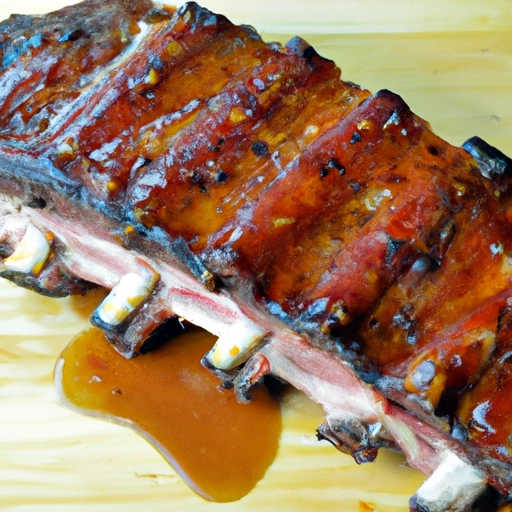Baby Back Ribs
Description

Baby Back Ribs are a prized cut of pork, known for their tender, succulent meat which is attached to the rib bones. These ribs come from the top of the rib cage between the spine and the spare ribs, below the loin muscle. They are shorter, curvier, and usually meatier and leaner than other rib cuts such as spare ribs. With their delicious taste and satisfying texture, Baby Back Ribs are a popular choice for grilling, smoking, and slow-cooking.
Common uses
Baby back ribs are widely used in dishes requiring slow cooking methods to achieve a tender and flavorful result. They are often marinated, dry-rubbed, and cooked with sauces that range from sweet to spicy. In various regional cuisines, they are a centerpiece for social gatherings such as barbecues and family dinners.
Nutritional value
Calories
A typical serving of Baby Back Ribs (4 oz or 113 grams) contains approximately 250 calories.
Protein
They are a rich source of protein, providing about 20 grams per serving.
Fat
While they have a moderate fat content of about 14 grams per serving, it's important to consider the type of preparation when calculating total fat intake.
Carbohydrates
Baby Back Ribs contain no carbohydrates unless they are cooked with sauces or marinades that include sugar or carbs.
Vitamins
They are a good source of B vitamins, particularly vitamin B6 and B12 which are crucial for energy metabolism and blood formation.
Minerals
Baby Back Ribs contain essential minerals such as zinc, phosphorus, and selenium.
Health benefits
The protein content in Baby Back Ribs supports muscle growth and repair, while the minerals such as zinc boost the immune system. B vitamins present in the meat also play a vital role in maintaining healthy nerve function and energy levels.
Potential risks
Consuming Baby Back Ribs in excess can lead to a high intake of saturated fats and cholesterol, which are linked to heart disease. Additionally, sauces and marinades high in sugar can increase calorie intake and contribute to weight gain.
Common recipes
Baby Back Ribs are a staple in recipes like classic BBQ ribs, slow-cooked ribs with a dry rub, and marinated ribs glazed with a sweet and tangy sauce.
Cooking methods
Popular cooking methods include grilling, smoking, slow-cooking, and roasting, often with a combination of dry heat and moist heat to tenderize the meat.
Pairing with other ingredients
These ribs pair well with sides like coleslaw, cornbread, baked beans, and roasted vegetables. They also complement a variety of beers and wines that balance their rich flavor.
Summary
Baby Back Ribs are a versatile and delicious ingredient that can be prepared in a myriad of ways, suitable for a wide array of culinary traditions. With their rich flavor, nutritional benefits, and satisfying texture, they are a favorite among meat lovers across the globe. When cooked properly, they offer a mouthwatering experience that's hard to resist.